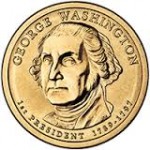What is a Binomial Experiment?
A binomial experiment is an experiment where you have a fixed number of independent trials with only have two outcomes. For example, the outcome might involve a yes or no answer. If you toss a coin you might ask yourself “Will I get a heads?” and the answer is either yes or no. That’s the basic idea, but in order to call an experiment a binomial experiment you also have to make sure of the following rules.
Watch the video for examples of binomial experiments:
Rules
- You must have a fixed number of trials. This should go without saying; if you don’t have a fixed number of trials you could be tossing that coin forever without stopping. In addition, the results from your experiment will be vastly different if you toss that coin twice (you could get two heads in a row and conclude that you will always get a heads if you toss a coin!) or if you toss it a hundred times .
- Each trial is an independent event. “Independent” means that every time you repeat the trial (i.e. tossing that coin), it’s a fresh new trial and nothing you do has an effect on each coin toss. For example, if you tossed ten coins at a time and removed the coins that landed heads down before throwing again, you’ll affect the probability, because there are fewer coins. There’s nothing wrong with that, but it would not be a binomial experiment. The fact that each trial is independent of each other leads to another important aspect of binomial experiments; the probability remains constant from trial to trial.
- There are only two outcomes. In other words, if you can phrase the experiment as a yes or no answer, then it can be a binomial experiment: Will I get a heads? Can someone find a parking space in the city? Do eggs hard boil in ten minutes?
Binomial Experiment: Examples
Need help with a homework question? Check out our tutoring page!
- Tossing a coin a hundred times to see how many land on heads.
- Asking 100 people if they have ever been to Paris.
- Rolling two dice to see if you get a double.
Examples of experiments that are not Binomial Experiments
- Asking 100 people how much they weigh (you’ll have a hundred possible answers, not two).
- Tossing a coin until you get a heads (it could take one toss, or three, or six, so there is not a fixed number of trials). This is actually called a negative binomial experiment.
Binomial experiment: Four Steps

Determining if a question concerns a binomial experiment involves asking yourself four questions about the problem.
Example question: which of the following are binomial experiments?
- Telephone surveying a group of 200 people to ask if they voted for George Bush.
- Counting the average number of dogs seen at a veterinarian’s office daily.
- You take a survey of 50 traffic lights in a certain city, at 3 p.m., recording whether the light was red, green, or yellow at that time.
- You are at a fair, playing “pop the balloon” with 6 darts. There are 20 balloons. 10 of the balloons have a ticket inside that say “win,” and 10 have a ticket that says “lose.”
Step 1: Ask yourself: is there a fixed number of trials?
- For question #1, the answer is yes (200).
- For question #2, the answer is no, so we’re going to discard #2 as a binomial experiment.
- For question #3, the answer is yes, there’s a fixed number of trials (the 50 traffic lights).
- For question #4, the answer is yes (your 6 darts).
Step 2: Ask yourself: Are there only 2 possible outcomes?
- For question #1, the only two possible outcomes are that they did, or they didn’t vote for Mr. Bush, so the answer is yes.
- For question #3, there are 3 possibilities: red, green, and yellow, so it’s not a binomial experiment.
- For question #4, the only possible outcomes are WIN or LOSE, so the answer is yes.
Step 3: Ask yourself: are the outcomes independent of each other? In other words, does the outcome of one trial (or one toss, or one question) affect another trial?
- For question #1, the answer is yes: one person saying they did or didn’t vote for Mr. Bush isn’t going to affect the next person’s response.
- For question #4, each time you toss a dart, the number of winning and losing tickets changes, which means, for example, if you win one toss, the probability of winning isn’t 10 to 10 anymore, but 9 to 10, since you already have one of the winning tickets. Since the probability is different, the trials are not independent events, so the answer is no, and question #4 is not a binomial experiment.
Step 4: Does the probability of success remain the same for each trial?
- For question #1, the answer is yes, each person has a 50% chance of having voted for Mr. Bush.
Question #1 out of the 4 given questions was the only one that was a binomial experiment.
Check out our YouTube channel for hundreds more statistics how to videos!

References
Gonick, L. (1993). The Cartoon Guide to Statistics. HarperPerennial.
Kotz, S.; et al., eds. (2006), Encyclopedia of Statistical Sciences, Wiley.